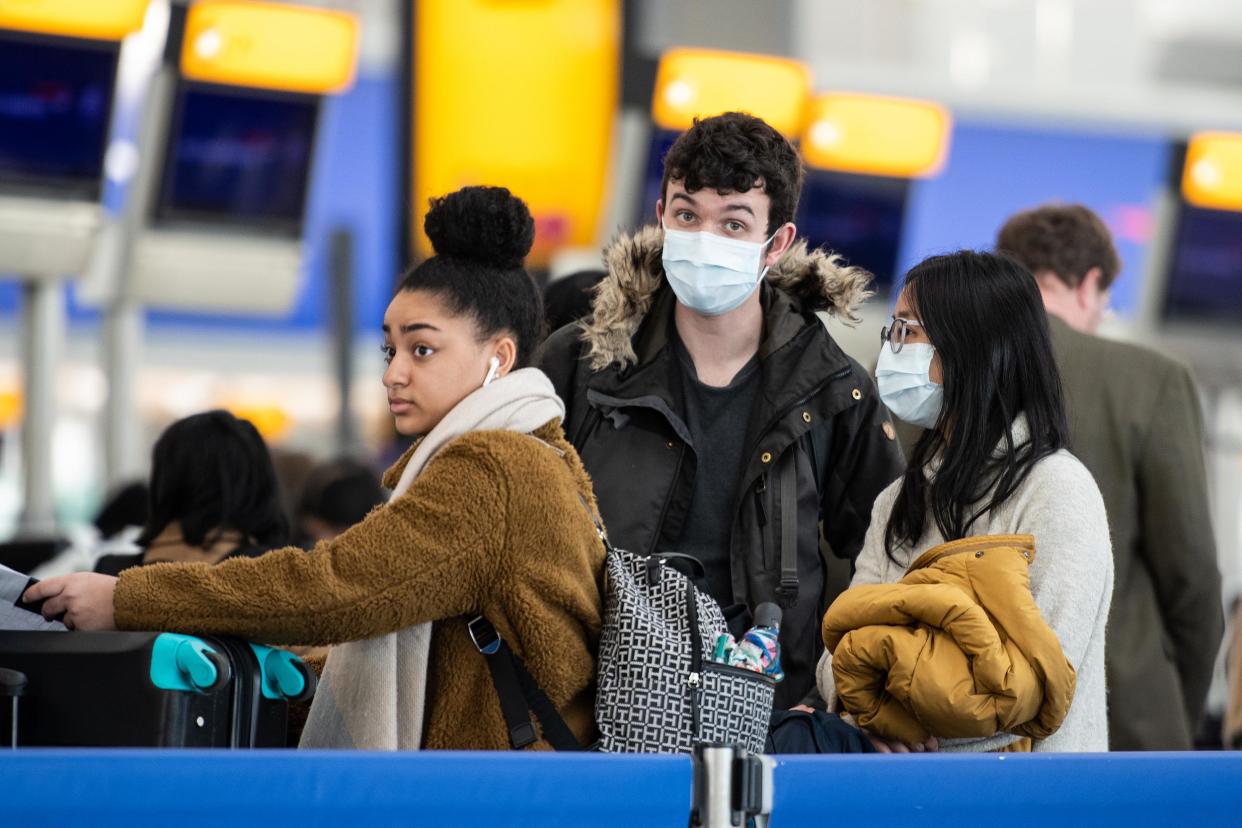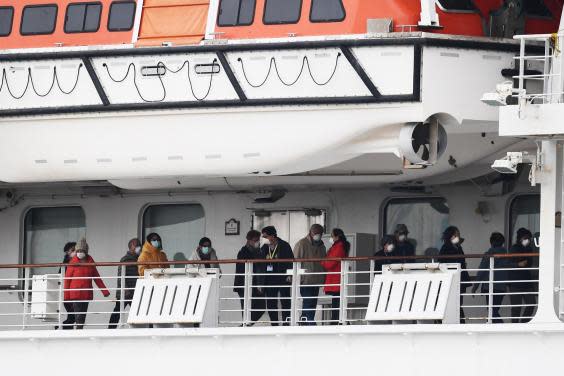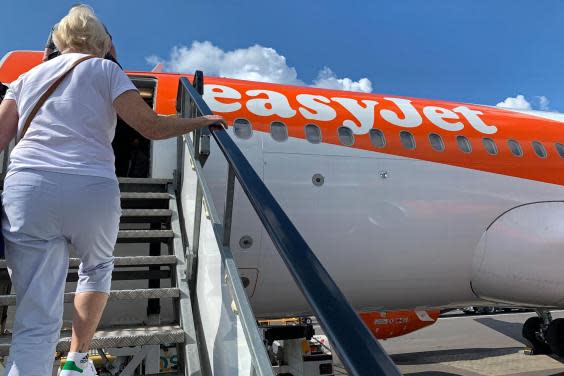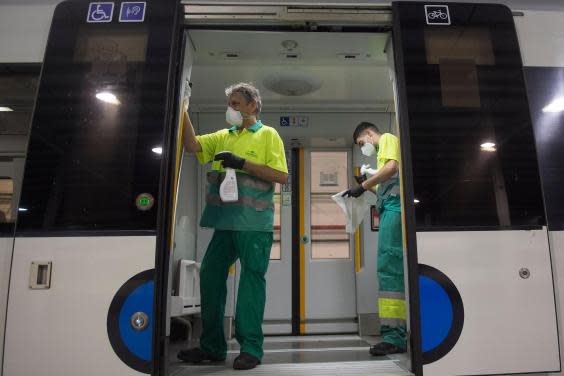Coronavirus: How safe is it to travel by plane, train or cruise liner?

As restrictions on travel around the globe gradually start to lift, some passengers may understandably feel some trepidation about returning to their pre-pandemic globetrotting habits. We’ve looked at the risks involved in travel by train, plane and cruise liner – and the measures introduced by the industry to try and mitigate them.
Cruises

In travel terms, cruise ships have been at the beating heart of the Covid-19 pandemic, with major outbreaks on the Diamond Princess and Ruby Princess making headline news around the world. At present, cruise liners are docked, with little to no indication of when operations are likely to commence.
Cruise Lines International Association (CLIA), the world’s largest cruise industry trade association, has said that cruise lines will sail again “when the time is right”, adding that this would be based on a number of factors, “including, most importantly, input from scientists and medical experts.”
At the beginning of June, P&O Cruises confirmed that after discussions with governments and embassies, it had made “the difficult decision to extend our pause for all sailings up to and including 12 November 2020”. In a video shared on the company’s website, P&O Cruises president Paul Ludlow stated that "whilst the [FCO] guidance is in place, it is not advisable for us to resume operations."
And at the end of August, company president Simon Palethorpe extended Cunard’s pause in operations until the end of March 2021 at the earliest.
Advice from the Foreign and Commonwealth Office (FCO) continues to warn against cruise ship travel at this time.
The latest warning reads: “The Foreign & Commonwealth Office advises against cruise ship travel at this time. This is due to the ongoing pandemic and is based on medical advice from Public Health England.
“The government will continue to review its cruise ship travel advice based on the latest medical advice.”
River cruising appears to still be permitted under FCO guidelines; the wording of the warning was updated in July to read: “Cruise ship travel means staying overnight for at least one night on a sea-going cruise ship with people from multiple households.”
Similarly, guidance from the Centers for Disease Control and Prevention (CDC) in the US states that cruise passengers are “at increased risk of person-to-person spread of infectious diseases, including Covid-19”. The CDC extended the 'No Sail Order' until 30 September, although this is unlikely to be lifted after this date.
Cruise ships may be unique in that the main liners are required to have at least one doctor and two nurses onboard, with medical staff on call 24/7, but these small cities on water are arguably a major breeding ground for disease. Cruise liners house a large number of people from around the world in a relatively small space, making viruses easy to spread.
Every year, there are cases of Norovirus on cruise ships, with the CDC reporting eight outbreaks on seven different ships in 2019. Industry figures suggest that around four per cent of passengers will contract the illness – one in 25 – when there is an outbreak on board.
Enhanced onboard cleaning and pre-boarding screening are expected, but making these spaces safe again is likely to be major challenge for the industry.
Convincing anxious passengers to return is also a significant obstacle for cruise companies to clear. In an April Twitter poll conducted for The Independent, almost two-thirds of respondents said they would not currently consider cruising.
Air travel

While many airlines have resumed operations around the world, a reticence to travel has led to a lack of demand and limited availability in some cases. Strict guidance is in place for those looking to become airborne, such as exercising social distancing and the mandatory wearing of masks. Quarantine measures also apply for many destinations, both upon arrival at your destination and upon return to the UK.
While onboard, FCO guidance advises passengers to remain seated as much as possible, use contactless payment where possible, to be aware that there is likely to be a reduced food and drink service and to make cabin crew aware if you become ill.
The International Air Transport Association (IATA), a trade association of the world’s airlines, published a “roadmap for restarting aviation” in May advising governments on how to reopen the industry. Rather than focusing on time inside the aircraft, it highlights time spent in the airport where large numbers of people could come into contact with each other; research in Finland found that the trays used at security are the most ‘dangerous’ items in an airport, for example.
In an attempt to minimise this, IATA called for passengers to provide health and contact information prior to arrival, to check-in remotely and print out boarding cards and luggage tags at home. Other suggestions include introducing temperature testing at entry points, limited access to terminals and the use of automated bag drops at the airport.
According to a BBC report, IATA vice-president Nick Careem emphasised the need for “enhanced and frequent” deep cleaning of the cabin, adding that the actual flight is relatively low risk and that “physical distancing on board is not necessary”.
Similarly to other forms of transport, try and avoid standing in a queue with people you don’t know – hang back during the boarding process – and try and limit the number of surfaces you touch and avoid handling money
Once on board, evidence suggests that the window seat is the place where passengers are least likely to come into contact with an infectious disease. In 2018, researchers at Atlanta’s Emory University studying the “behaviours, movements and transmission of droplet-mediated respiratory diseases during transcontinental airline flights” found that those in window seats had far fewer encounters with others than passengers in other seats – even factoring in their movements around the cabin during the flight. Passengers in window seats are less likely to get up from their seat, with just 43 per cent moving around the aircraft, compared with 80 per centre of people in aisle seats.
In addition, CDC research found that the likelihood of infection spreading from another passenger was “medium” if you are seated on an aircraft within six feet of a traveller “with symptomatic laboratory-confirmed 2019-nCoV infection”.
Mr Careem added that when it comes to aviation, “there is no silver bullet, no single measure that can prevent infection”.
Trains

In the UK, face coverings became mandatory on public transport from 15 June, but this directive varies from country to country. While rail services around the globe have suffered major cuts as a consequence of Covid-19, the industry has cited the reliance of key workers on this method of transport to travel to and from work.
In May, the European Commission unveiled a series of measures aimed at helping people to travel safely around the continent by rail. These included increasing the frequency and capacity of trains to reduce passenger density; implementing mandatory seat reservations on long-distance regional trains; managing passenger flow at stations and closing stops if public health would be at risk; requesting passengers to leave empty seats between them (except for passengers from the same household); trains doors being opened automatically or remotely by the driver; and the promotion of off-peak travel for commuter trains.
Similarly to other forms of transport, “intensified and regular cleaning and disinfection of transport hubs and vehicles” has also been promised. In the US, Amtrak has limited ticket sales on reserved services to allow for physical distancing, implemented “enhanced cleaning and disinfecting”, introduced cashless payments only, installed an “automatic door open” button that can be operated by foot for movement between carriages, and made face coverings mandatory.
Like buses, the infection risk on trains is largely dependent on how crowded they are and how much distance can be kept between other people. Ventilation also plays a role, so being able to open windows can be advantageous.
Research undertaken by Dr Lara Goscé at the Institute of Health in 2018 suggested a link between commuting on the London Underground – a notoriously busy network – and an enhanced risk of catching respiratory illnesses. While this study focused specifically on the London Underground, the results demonstrate “the existence of a correlation between the use of public transport and infectious disease transmission.”
“Transmission of infectious diseases is directly correlated to the number of contacts between individuals,” Dr Goscé told The Independent. “The more contacts, the higher the chance of contagion.
“With public transport, we usually refer to confined and particularly crowded environments (such as stations, train carriages, buses etc.) where close contact between infected and healthy individuals is probable because of the high density of passengers, and also the possibility of touching potentially contaminated objects such as handles and seats,” she said.
“If buses and trains are crowded, then commuters will be less than two metres away from a greater number of people and thus the risks of transmission increase,” Dr Michael Head, senior research fellow in global health at the University of Southampton, told The Independent.
Dr Head emphasised the importance of washing hands thoroughly before and after using public transport, while Dr Goscé encouraged passengers to avoid high peak hours and try to make trips involving only one means of transport (i.e. not changing lines or services).
“Also, as recommended by the WHO, everyone should practice good respiratory hygiene, i.e. sneezing and coughing into a flexed elbow and immediately discarding used tissues into a closed bin,” she added.
Read more
Three in 10 people say they would not board a cruise again, poll finds


